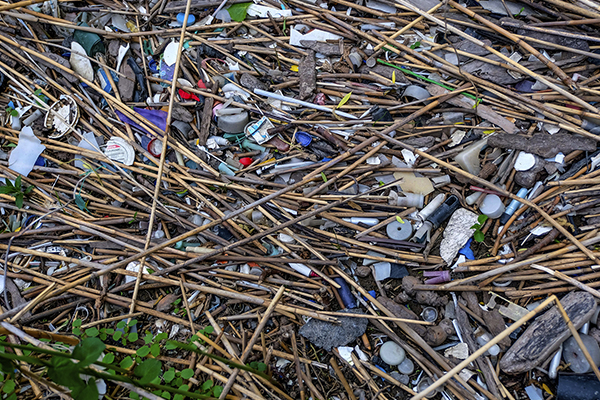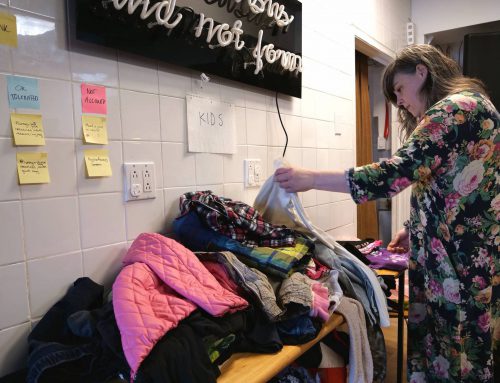BY Amely Coulombe & Geneviève Asselin
For most women, the routine is the same each month—buy a box of pads or tampons and try to think about your period as little as possible. Do this every month for about 40 years without ever stopping to think about the damage you could be causing to the environment. By the end of it, you’ll have used over 12,500 tampons or pads which will end up in a landfill, or worse, in our waters.
While we’ve been told that plastic straws and water bottles are harmful to the environment, we haven’t put much thought into the environmental impact of a period.
“For some reason I never considered how my period was contributing to waste,” says Tippi Thole, a zero-waste blogger and activist. She explains that although she had been making green choices for over a decade, like buying second hand clothing or cloth diapering her son, she had never really thought about her feminine hygiene products.
These products can include up to 90 per cent plastic, contain dozens of chemicals and represent three kilograms of waste each year per woman. In Canada, that’s about 54 million kilograms of waste each year. This waste ends up in landfills and in our water systems.
Jimmy Vigneux heads up Mission 100 Tonnes, an organization whose aim is to remove waste from waterways and oceans. He says that feminine hygiene products are among the most commonly found items.
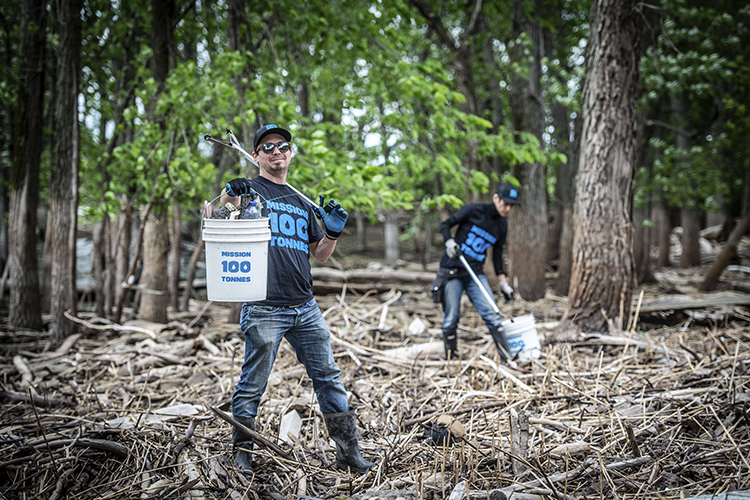
Jimmy Vigneux at a clean up mission in Sorel, where they found a significant amount of tampon applicators. Photo courtesy of Jimmy Vigneux.
“We find a lot of tampon applicators. They are one of the products that we need to find a solution for so that we can eliminate them all together,” says Vigneux. “The solution exists, all we need is a little investment and laws to encourage the fact that even if disposable products are cheaper, we don’t want them anymore.”
Tampons are problematic for water treatment plants. Bruno Desmarais, the Exploitation Manager at the Régie d’assainissement des eaux usées du bassin de Laprairie, says they clog up the filtration systems. Video by Geneviève Asselin.
While many may think that traditional disposable pads and tampons are the only options, there are reusable and eco-friendly options which have been around for decades. These options have gained popularity with the rise of the zero-waste movements.
“If we look at the alternatives, there are three main ones: the menstrual cup, washable pads and menstrual underwear,” says Érica Athena Lebrun, co-founder of Mme L’Ovary, a Montreal-based reusable feminine hygiene brand. “Of these three alternatives, the menstrual cup seems to be the most practical and comfortable option amongst women.”
Lebrun says that these alternatives are not only better for the environment but they’re also better in terms of health and comfort. She says that while women often initially make the jump from disposable feminine hygiene products to reusable options due to the environmental benefits, later on they see the health and financial benefits.
“What initially motivated me was really the desire to do my part for the environment,” says Mélissa Audette, a Montrealer who started using a menstrual cup a few years ago. “I was initially reluctant but when I talked to other women, they convinced me to try it and I was hooked after the first time.”
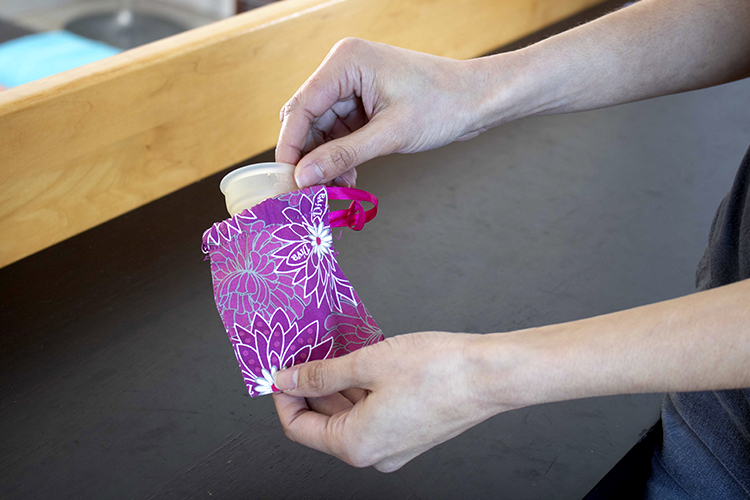
Menstrual cups are made of silicon and can last up to ten years. Photo by Geneviève Asselin.
One reason that women continue using disposable products is the difference in cost. While disposable products cost around $0.25 each, a reusable menstrual cup costs around $35. That being said, a menstrual cup pays for itself within about six months and can last up to ten years.
“Whenever we buy reusable options we need to look at it as an investment rather than a cost,” says Thole. “When you buy disposable products, you are literally throwing away your money.”
In an attempt to help encourage women to use environmentally friendly options, some municipalities and boroughs have subsidized reusable menstrual products. In February, the Montreal borough of Rosemont-La Petite-Patrie offered a $40 subsidy for the purchase of reusable products. It was a success and all 50 subsidies were claimed within the first weeks.
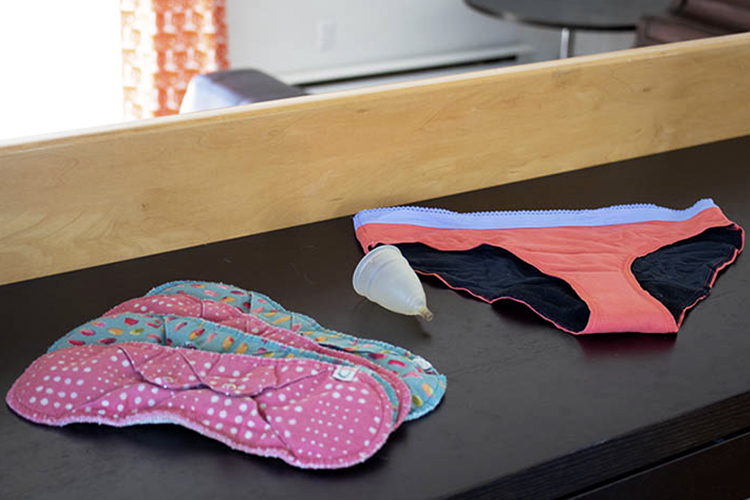
Sustainable hygiene products would be a good alternative to traditional sanitary products. In North America, close to 20 billion hygiene products are dumped in landfills every year. Photo by Geneviève Asselin.
“I think it’s great when cities can offer subsidies because it makes the reusable option more attainable for more people,” says Thole. “What’s really great about that subsidy is that it might have actually exposed a lot of people to a reusable alternative that they maybe never knew existed.”
Lebrun says that while existing subisidies are great, there should be many more of them because they would actually benefit the city in the long run. Offering to subsidize all reusable menstrual products would allow the city to save money on transportation of landfill waste which is becoming more and more expensive as cities run out of space to put their waste, according to a study conducted for Lebrun.
With clear benefits for cities and consumers as well as the environment, the question is why more women aren’t making the switch to reusable products. Part of the problem is that these sustainable options are not as well known.
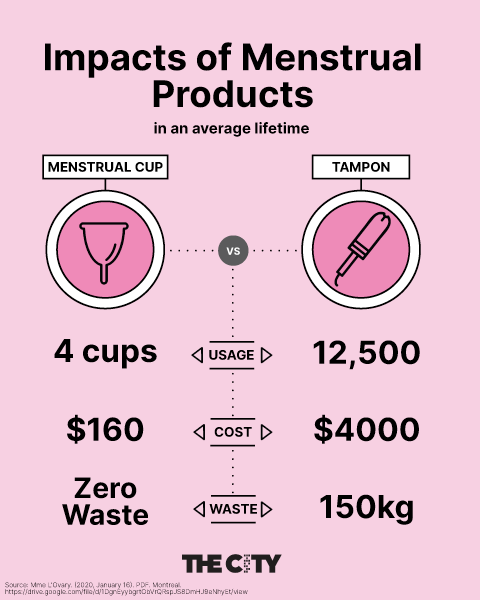
Menstrual cups are made of silicone and can last up to ten years. Media by Amely Coulombe.
Thole says that growing up, she never saw ads for reusable options in magazines. She believes that the norm of using disposable options is due to a lack of exposure to reusable alternatives.
“I think that we should normalize reusable options instead of the opposite where we’ve normalized waste and I think it will be something that will catch on,” she says.
As these alternatives continue to grow in popularity, recently, larger, mainstream corporations like Tampax have started producing reusable menstrual cups.
Lebrun says that she thinks it’s great that larger companies are starting to offer these reusable options as it protects both the planet and women. While she thinks that this exposure is crucial, she also thinks that there is a long-time, societal taboo associated with periods that needs to change.
“I think the number one reason why the majority of women are still using disposable feminine hygiene productions is the shame and disgust that women have around their own cycles and bodies,” says Lebrun. “If you’re disgusted by your own menstrual blood, you simply want to get rid of it as quickly as possible.”
Lebrun believes that in order to fix the environmental problem of disposable menstrual products, we must first stop associating menstrual blood with something that needs to be thrown in the trash.
